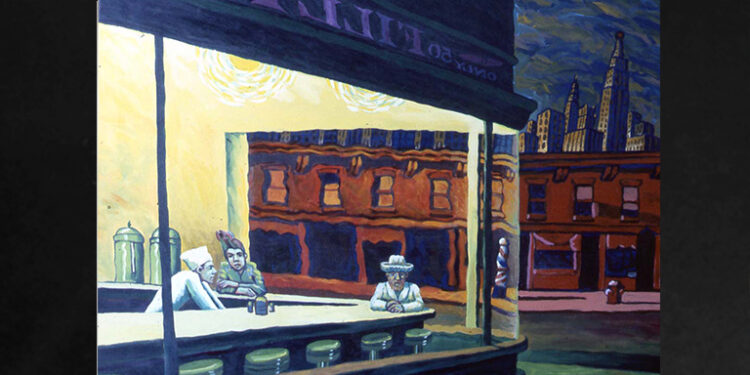What is the plot of A Clean, Well-Lighted Place
What is the plot of A Clean, Well-Lighted Place-What is the story point of view in A Clean, Well-Lighted Place?,What is the setting of A Clean, Well-Lighted Place?,What is the climax of the story A Clean, Well-Lighted Place?,In Ernest Hemingway’s “A Clean, Well-Lighted Place,” the narrative unfolds in a Spanish cafe late at night, focusing on three central characters: an elderly deaf man, a younger waiter, and an older waiter. Despite its brevity, the story encapsulates profound themes of existentialism, loneliness, and the quest for meaning in an apparently indifferent universe.What is the plot of A Clean, Well-Lighted Place
The tale begins in a well-lit, clean cafe in a Spanish town, where an elderly deaf man seeks refuge late into the night. The old man frequents the cafe, finding solace in its tranquil environment and well-lit surroundings. His deafness isolates him from the surrounding conversations, creating a silent world that becomes his sanctuary. The cafe, with its comforting lights, shields him from the darkness and chaos that might exist beyond its confines.
The narrative introduces two waiters who work at the cafe, each embodying different stages of life and reflecting distinct attitudes toward existence. The younger waiter, impatient and eager to close the cafe, lacks empathy for the old man who wishes to prolong his stay. In contrast, the older waiter, who understands the solitude and despair of the night, empathizes with the old man’s desire for a clean, well-lighted place.
As the story progresses, the younger waiter’s impatience with the old man’s presence grows. He is eager to close the cafe, return home to his wife, and escape the seemingly monotonous routine of his job. This impatience symbolizes the lack of understanding and compassion that often characterizes youth in the face of the struggles of the elderly. Conversely, the older waiter relates to the old man’s need for a well-lit space, recognizing the importance of such places in a world that can often be dark and unforgiving.
Hemingway’s writing style, characterized by its brevity and economy, conveys the internal thoughts and external actions of the characters. The dialogue between the two waiters and their interactions with the old man provide insight into their contrasting perspectives on life. The younger waiter’s impatience and dismissive attitude towards the old man’s need for light highlight a lack of awareness about the existential concerns that plague the human condition.
Also Read-
- A Clean, Well-Lighted Place: Full Plot Summary
- Attempt a critical reading of A Clean Well Lighted Place
- Great Expectations: Summary and Themes
On the other hand, the elder waiter represents a more sophisticated appreciation of life’s intricacies. His observations regarding the significance of a spotless and well-lit space demonstrate a deep existential consciousness. He recognizes the actual and figurative darkness outside the cafe, as well as the symbolic value of a brightly lit area serving as a haven from the gloom. The older waiter reflects on themes of hopelessness, nada (nothingness), and the search for purpose in life among an apparently meaningless existence.
The concept of nada, introduced by the older waiter, becomes a central theme in the story. Nada, or nothingness, represents the existential void that individuals confront in their lives. The older waiter, who identifies with the old man’s need for a clean, well-lighted place, sees this as a way to combat the overwhelming sense of nada that permeates existence. The cafe, with its cleanliness and illumination, becomes a metaphorical barrier against the darkness and nothingness that threaten to engulf individuals in their moments of solitude.What is the plot of A Clean, Well-Lighted Place
The story takes a poignant turn when the younger waiter, still eager to close the cafe, expresses his disdain for the old man. He dismissively attributes the old man’s attempted suicide to nothing more than a temporary bout of insomnia, displaying a lack of empathy and understanding. This moment underscores the stark contrast between the younger waiter’s callousness and the older waiter’s empathy, emphasizing the broader theme of human connection and compassion in the face of existential struggles.
The older waiter’s soliloquy becomes a philosophical reflection on the human condition. He contemplates the nature of nada, the emptiness that haunts individuals when confronted with the harsh realities of life. The older waiter finds solace in the routine of his work and the existence of clean, well-lighted places, recognizing them as necessary shields against the existential despair that lurks in the shadows.
Hemingway leaves the ending of the story open to interpretation, inviting readers to contemplate the deeper implications of the characters’ struggles and the philosophical questions raised throughout the narrative. The cafe, with its cleanliness and illumination, represents a fleeting sanctuary against the dark forces of the world. The story leaves the readers with a sense of the eternal struggle against nada, suggesting that finding meaning and solace in the face of existential challenges is an ongoing and deeply human endeavor.
Conclusion:
In conclusion, Ernest Hemingway’s “A Clean, Well-Lighted Place”shines as a moving examination of existential topics in the late-night setting of a Spanish cafe. The narrative explores significant themes of loneliness, the search for meaning in life, and the divergent viewpoints that accompany different phases of life through the interactions of three primary characters: an elderly deaf man, a younger waiter, and an older waiter. The well-lit, clean cafe serves as both a physical and metaphorical refuge against the darkness of the world, symbolizing the ongoing struggle against the existential void, or nada, that individuals confront. Hemingway’s minimalist prose and nuanced characterizations contribute to a timeless reflection on the human condition, inviting readers to ponder the significance of finding solace and meaning in the face of life’s inherent challenges.
FAQ:
1. How does the story explore the theme of nada?
Nada, or nothingness, is a central theme in the story, introduced by the older waiter. It represents the existential void that individuals confront in their lives. The older waiter sees the clean, well-lit place as a defense against the overwhelming sense of nada, offering a temporary reprieve from the existential despair that lurks in the shadows.
2. What is the contrast between the younger and older waiter’s perspectives?
The younger waiter is impatient, eager to close the cafe, and lacks empathy for the old man’s need for a well-lit space. In contrast, the older waiter empathizes with the old man’s solitude and understands the importance of a clean, well-lit place as a sanctuary against the existential void. This contrast highlights the different attitudes toward life and the human condition.
3. How does the story address the human quest for meaning?
The story addresses the human quest for meaning through the characters’ interactions and the symbolic significance of the clean, well-lit place. It suggests that individuals seek meaning and solace in places that provide a temporary reprieve from the darkness and nothingness that characterize existence.
4. What is the role of the deaf old man in the story?
The deaf old man represents a figure seeking refuge in the clean, well-lit cafe. His deafness isolates him from the surrounding conversations, creating a silent world that mirrors his internal isolation. The old man’s presence serves as a catalyst for exploring themes of loneliness, empathy, and the human need for well-lit spaces.
















